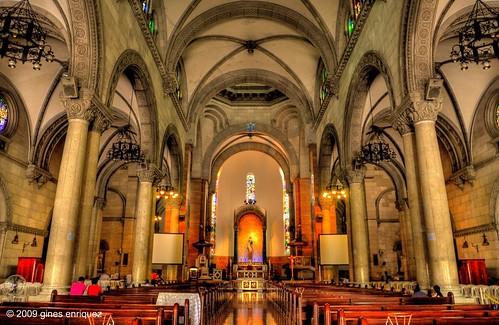14th February 2012
Church officials said a study conducted by engineering firm Angel Lazaro & Associates, Inc. that this version of Manila Cathedral, rebuilt in 1958 after being destroyed during World War II, does not comply with the National Structural Code.
Stress tests conducted on cement samples showed some withstanding pressures of only 600 pounds per square inch (psi), well below the minimum 3,500 psi required for cement from 1958. Steel reinforcing bars that failed confinement tests were also cited as a concern.
What is even more worrisome is that the cathedral sits on soft ground or "potentially liquefiable soils", Fr. Reyes said, which means it could collapse in the event of an earthquake. "As it is, [Manila Cathedral] is not safe," he said.
Angel Lazaro has initially suggested "grouting," or pouring cement into the ground, to prevent liquefaction. Other options include increasing the building’s footing or installing piles of at least 38 meters. The structure of the cathedral itself will have to be retrofitted with carbon rods.
Initial estimates place the repair costs at P150 million but this figure could balloon depending on the extent of structural damage.
The Manila Cathedral Basilica Foundation has promised to help raise funds for the renovation-cum-restoration project, which is now in the design phase.
No drastic changes will be done to the facade, said Fr. Reyes. "We will, as much as possible, return it to what it is now."
This is the first time that the Manila Cathedral’s entire structure will undergo major repairs since it was completed in 1958. The last time it was partially renovated was after the 1990 Baguio earthquake, which caused the cathedral’s bell tower to lean
Tuesday, February 14, 2012
Manila Cathedral could collapse
Subscribe to:
Posts (Atom)
